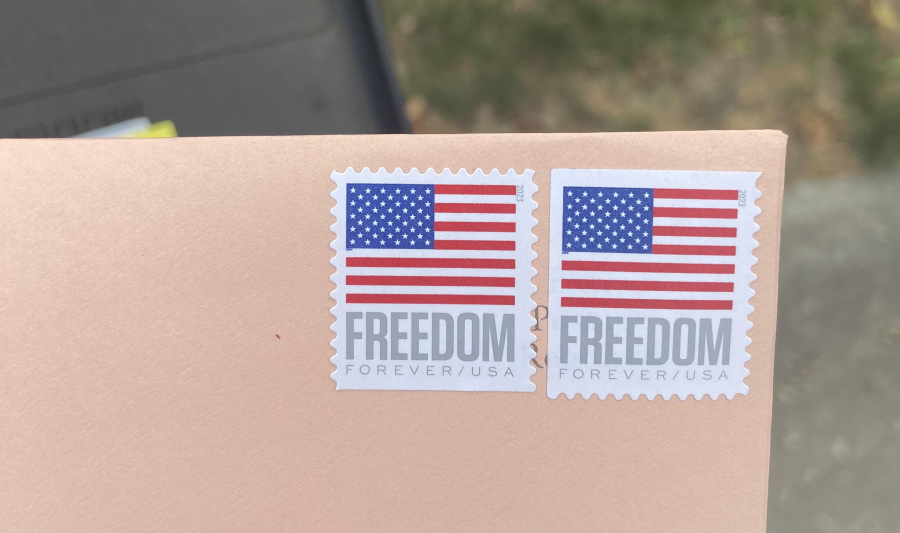Since 2007, applying postage for most mail has been extraordinarily easy. You buy one Forever Stamp and put it on. It doesn't matter if you bought the stamp five years ago. You don't have to think about what the current rate is. You don't have to see any numbers at all. It's just one letter, one stamp.
However this simple rule only applies for what the post office calls "standard-sized" letters. For most mail, that's fine, but there are a couple of rules that greeting cards often don't comply with, making you have to research why it got sent back and either guess how much to pay or else do math.
Weight
The first standard of standard mail is that a letter must weigh less than 1 oz. Unless you're using really cheap paper, this is about 4 sheets of letter-sized paper. Most greeting cards are thick cardstock and will be over this. You can guesstimate with a kitchen scale, but err on the heavy side as these are not accurate enough to be sure.
Assuming you are over, you have to pay extra postage. Currently, the fee is 28¢ per ounce over, although this will surely increase in the future. Since standard stamps are currently 73¢, mailing a card usually costs $1.01 postage. If you're not a big card person, just slapping an extra Forever Stamp is a safe bet which will cover it 1½ times over and only donate 45¢ to the government unnecessarily. However, if you mail a lot of cards, it may be worth it to pick up some neato "Two Ounce" stamps or "Additional Ounce" stamps the next time you're at the post office to save a little money and add a little flair to your letters. Like Forever Stamps, Two Ounce and Additional Ounce stamps will always cover a a two-ounce letter and an additional ounce, respectively, no matter what the Postal Service increases the rate to. It's quite the handy stamp secret.
Size
The other issue you might run into with cards are the size standards. A "standard-sized" envelope must not be more than 6⅛ inches tall and must have an aspect ratio of at least 1.3 (E.g., if your card is 5" tall, it must be at least 6½" long). I would guess neither of these size restrictions is an issue with most cards, but it's good to be aware of.
If you do have a large or square card, it instead becomes a "large envelope", also known as a "flat". These are quite a bit more expensive. Instead of the current 73¢ rate for letters, large envelopes cost $1.50 to mail. Assuming it's also at least 2 oz, that's $1.77 total.
Unfortunately, there is no simple "large envelope stamp". You have choose a less-ideal option:
- You can take the traditional method and track the current rates and buy stamps of various denominations to add up to it. You could do a Forever Stamp + a $1 stamp + a 4¢ stamp; two 85¢ semipostals + a 5¢ stamp + a 2¢ stamp; or two Forever Stamps + a 3¢ stamp + an Additional Ounce stamp; etc. You almost have to invest in a variety of stamps for this, but it is afterwards pretty efficient in both time and money, and it makes your letter pretty cool, in my opinion.
- You can take the letter to the post office and just buy exact postage there, although this is probably too much of a waste of time to consider.
- What most people with do: slap three Forever Stamps on there and just waste a whopping 42¢ per letter. You have too many other things to worry about to care about stamps.
(The above-prices are current as of July 2024.)
The above is my understanding of the law. I am a lawyer, but I am not your lawyer. This post does not constitute legal advice. I make no warranty as to its accuracy or applicability to you. If you need a lawyer, get a lawyer. If you want me specifically, hire me.
